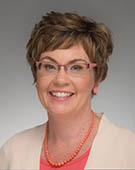From the Director (Fall 2016)

I am writing this note from Notre Dame’s Rome Global Gateway, where the Cushwa Center and the Pontifical Gregorian University are sponsoring a panel discussion of John McGreevy’s new book on American Jesuits. As I have done on several recent October breaks, I will also be spending time in Roman archives, mining a rich array of sources to situate my research on U.S. Catholics in a broader context. This was a task our late colleague, Peter D’Agostino, had long urged me (and many others) to undertake. Peter’s award-winning book, Rome in America, used Roman sources to demonstrate the importance of papal politics for 19th- and 20th-century American Catholics. Peter chided many of us for ignoring the Roman side of the American Catholic story.
The problem was that it all seemed so daunting to the rest of us. I hadn’t the faintest idea how to begin working in the Vatican Secret Archives (ASV). I’m grateful that, through Peter, I met Matteo Sanfilippo of Tuscia University. When I was in Rome in October 2010 to attend the canonization of Brother André Bessette, C.S.C., I decided to see whether there was anything relevant at the ASV for my own research on U.S. causes for canonization. Stateside, Massimo Faggioli helped me prepare letters of introduction. In Rome, Matteo guided me through the ASV’s index room. Thanks to their help, I made my first Roman archive visit. Peter was right, after all. My understanding of the U.S. Catholic experience hasn’t been the same since.
After that first visit, I not only returned to the Vatican Archives, but also ventured into congregational archives, such as those of the Redemptorists and the Society of the Sacred Heart. Over this time, I have met many other colleagues who, like Matteo Sanfilippo, are Italian-based historians of North American Catholicism. Among the most treasured is Luca Codignola, who now serves as Cushwa’s Senior Fellow. Luca and Matteo were invaluable in helping John McGreevy and me to organize Cushwa’s Rome Seminar in June 2014, which introduced a cohort of scholars of American Catholicism to the vast opportunities available throughout the city. After that successful seminar, we were searching for a means to extend that opportunity. With the help of Notre Dame’s Office of Research and the vision of Ted Cachey, Academic Director of the Rome Global Gateway, the center was able to hire Matteo Binasco as a postdoctoral fellow in Rome. Matteo has spent the last two years researching Roman Sources for the History of American Catholicism, 1763–1939, a comprehensive guide to nearly 50 institutional archives in Rome. With that project approaching publication, Luca’s cover story in this newsletter introduces the background and purpose of the guide.
Tomorrow morning, I will take the overcrowded H bus to the end of the line to visit the Vincentian Archives and track down a few final details on Elizabeth Ann Seton’s cause for canonization (see Luca’s “case study” on Seton, page 10). Navigating Rome and its archives can be intimidating. I smile, though, when I think of how much better off I am today than when I first visited five years ago. I can read and speak Italian now (admittedly with an accent), and I have a sense of what I can expect to find. Working with Matteo Sanfilippo, Matteo Binasco, and Luca Codignola has helped me build confidence as a researcher in Rome, which is what we hope this guide will do for many historians to come, placing the promise of Roman sources a bit closer to hand.
Kathleen Sprows Cummings
October 17, 2016